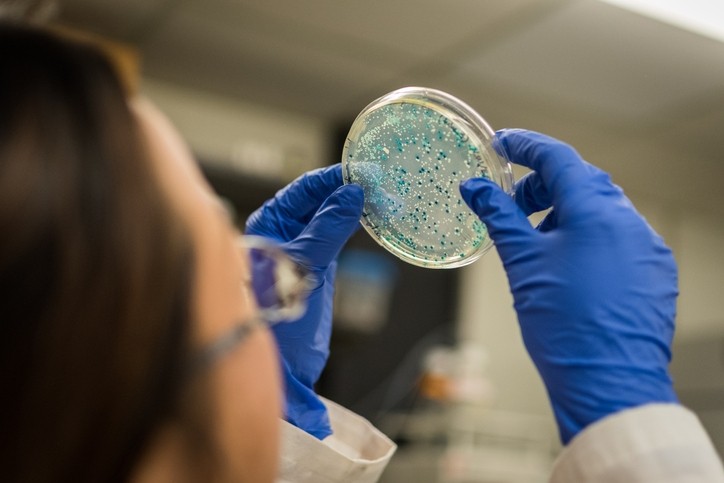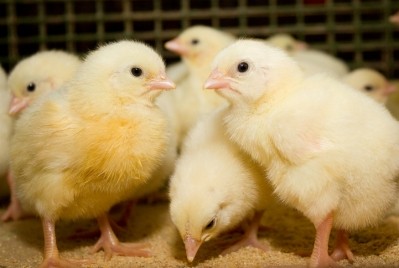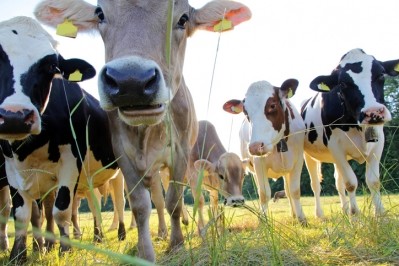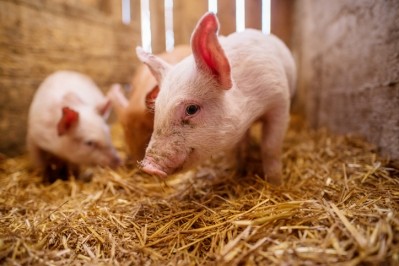Reports from IPPE
Microbiome-focused startup plans geographic, product expansion

We caught up with Jimmy Owens, chief operating officer with Ascus Bioscience, at this week’s International Processing and Packaging Expo (IPPE) in Atlanta to hear more about how the endomicrobial ecology or animal microbiome startup is developing.
It recently launched its first commercial product aimed at dairy production.
The company has been working to address what its founders’ saw as an “unmet need” within the direct-fed microbial market, Owens told us. “We haven’t started to scratch the surface of native microbes in the animal."
Many of the direct-fed microbial products currently available relate back to a small set of common microorganisms, he said. However, in its development work, the company has recognized more than 55,000 “metabolically active, native microbes” for the species it has been exploring.
“We felt there was this huge opportunity to discover, develop and commercialize native microbes in each animal."
The microbes of interest are those not often present in large amounts within the animal, he said.
“They’ve all been less than 1% of the relative abundance of the microbes in there so all we’re actually doing is shifting something from maybe .5% to 1% abundance in the population because that’s what we’ve seen in the higher producing animals,” Owens said. “That’s why we feel confident that the microbes will work in those environments – this is the microbe’s job, it’s what it’s wired to do, and it’s been able to overcome any kind of management or regional variability.”
The intention is also to provide another option for producers looking for an alternative to an antibiotic, he said. “The industry is going through a transition, [questions are being asked about] what the appropriate use of antibiotics look like – when and how should we use them,” he said.
“What the antibiotic was doing was affecting the whole microbial community from the top down,” he said. “We can do the bottom-up approach. By understanding the animal’s native biology and those microbial communities we can select for a native microbe that’s going to have the same effect that an antibiotic did but working with the animal’s innate biology.”
Company overview and R&D process
To develop its product line, thousands of samples are taken from the rumen or the gastrointestinal tract of the animal, said Owens. Samples from healthy, high performing and potentially disease-challenged animals are collected to see how the microbial communities differ.
“It’s studying the microbes that are native to and inside the animal and how they interact with one another as a community in terms of helping the animal’s overall health and function."
Samples go through genetic sequencing to determine what microbes are present and are then evaluated to see which are metabolically active, he said. “Then when you do further sequencing on it you can actually start to understand what is the function of that individual microbe is playing."
Additional analysis is conducted to understand some of the non-linear relationships within the data to link microbes with outcomes of interest in that production animal – like increased milk yield, improved daily gain or disease resistance, he said.
Once identified for production, microbes are fermented and then stabilized so the live organism is in a suspended state before it is encapsulated, said Owens.
“In each [animal] – dairy, and beef, and poultry – we’ve identified over 100 microbes we think would be great products and the challenge then is actually developing those into a commercially viable product,” he said. “Our biggest bottleneck as a company is not about finding native microbes that we think are going to serve a valuable function, but whether we can get those into a commercially formulated point back into the animal and doing what they’re supposed to do.”
Dairy launch and regional expansion
Ascus launched its first product, for use with dairy cows, in Argentina, Uruguay, Chile and Mexico, said Owens. It is now scaling up in those areas.
The company’s next step for the dairy feed additive will be to seek market entry and regulatory approval in New Zealand and the US, he said. The goal is to bring the product to market in the US in the second half of 2020.
The additive can be mixed into a ration, he said. It contains a blend of microbes selected due to the fact they were present in rumen samples collected in several different geographies, that they have the ability to improve the function of other beneficial microbes and also because they have been linked to an improved enzyme and fatty acid production, he explained.
“In the dairy product, we have one bacterium and one fungus. The fungus is a cellulose degrader that creates enzymes and gives the cow more digestive capacity, and the bacterium is a volatile fatty acid producer and creates huge levels of butyrate and acetate giving the cow more energy,” Owens said. “You put those together and you have more digestive capacity, and more overall energy - that’s kind of the mode of action … we’re seeing good overall results on production and feed efficiency.”
Ongoing R&D
Efforts to develop products for the poultry and beef industries are ongoing, said Owens.
“In poultry, we’re hoping to get into the Latin American markets, a couple of them, sometime in 2020,” he said. “We plan to hopefully have all the commercial formulation, greater clarity around the microbes’ efficacy and overall product profile by the end of this year, and then we’ll be submitting [dossiers] for registration in the Latin American markets.”
The poultry product being developed is expected to be a post-pelleting liquid feed additive, he said. The goal is to provide support for birds facing a challenge from the presence of clostridium perfringens - which can lead to necrotic enteritis - and improve feed conversion or average daily gain.
“The microbes that are the basis for our poultry product in the pipeline appear to compete very well against clostridium perfringens,” said Owens. The idea is to provide microbes that would outcompete the harmful microbes, he added.
Another element involved with poultry development is determining the best stage to supplement the feed with the additive, he said. Lingering egg white proteins in newly hatched chicks have an antibiotic-like property and tend to kill added microbes.
In beef production, the focus has been on developing microbes that support improved daily gain and animal health during the transition period, he said. However, there also is interest in finding strains that can compete against methanogens to limit overall methane generation.















